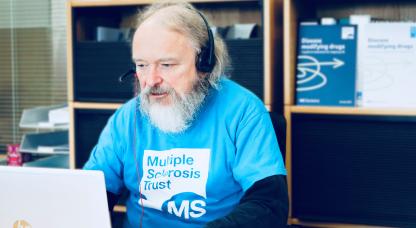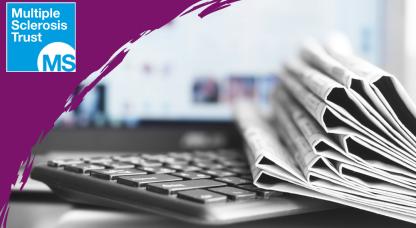Acupuncture is a complementary therapy sometimes used by people with multiple sclerosis.
Acupuncture is an element of traditional Chinese medicine. This says that health depends on the body's life force or energy flow (qi – pronounced chee). Qi moves in a smooth and balanced way through the body along paths called meridians. If qi becomes unbalanced or blocked, illness may result. Using fine needles at key points on the body, the acupuncturist can trigger the body's own healing response and help restore natural balance.
An American survey of 1,000 people with MS found that about one in five had used acupuncture, mostly for pain or anxiety. About half also said that fatigue, depression, spasticity and sleep problems improved. Despite a large amount of anecdotal support for acupuncture for MS symptoms, there has been limited research into the area. Those studies which have been reported have tended to be small – including single case studies, they often lack controls, the descriptions of the treatment protocols used have been inconsistent and there has been a lack of statistical analysis of the results.
The following are the findings of some of the studies which have been carried out.
A review looked at research into acupuncture for a range of conditions other than MS. This found some evidence that it could help with some, but not all, types of pain.
A 2014 review of 12 studies in MS concluded that although many of the studies included suggested that acupuncture was successful in improving MS symptoms – including quality of life, fatigue, spasticity and pain, the poor study designs made it difficult to draw any firm conclusions about the true effectiveness of acupuncture.
A 2017 study looking at the effects of acupuncture in people with MS with walking difficulties compared true acupuncture with sham acupuncture. Of those who received true acupuncture 95% saw an improvement in walking as measured by the timed 25-foot walk test, compared with 45% in the sham treatment group.
Another 2017 study in China, again comparing true acupuncture to sham acupuncture, showed a positive effect in people with MS who received true acupuncture with reduced EDSS scores seen at 3 and 6-months post-treatment. However, this effect wasn't maintained at 12 or 24 months.
A 2018 review of acupuncture for spasticity in a number of conditions including MS, concluded that there wasn't enough evidence that acupuncture (including electroacupuncture) could reduce spasticity in MS.
A further literature review of the use of acupuncture in MS was carried out in 2021. 31 articles in English were included in the research. The review concluded that both traditional Chinese acupuncture and scalp acupuncture appeared to help improve symptoms including fatigue, pain, walking difficulties and bladder problems, and reduce relapses.
A study in 2021 looked at whether cytokine levels were affected by acupuncture in people with MS. Cytokines have a role in disease activity in MS, and previous studies have shown that acupuncture can affect cytokine levels in people with other inflammatory conditions. The study also looked at the effect of acupuncture on health-related quality of life (HRQoL). 66 participants were randomised into three groups – real acupuncture, sham acupuncture and a reference group. The serum levels of 11 pro- and anti-inflammatory cytokines were assessed at baseline, after two and four weeks of treatment, and four weeks after the final treatment. No significant differences were seen in cytokine plasma levels between the three groups, nor were there any differences between the groups in health-related quality of life.
There is a need for better designed studies with larger numbers of people involved, which include control groups, clearer descriptions of the treatment protocols used and better analysis of the results to get a clearer picture of whether there are benefits to using acupuncture for MS.
Despite some promising results, there's not enough evidence to make claims for or against the use of acupuncture in MS, and its mechanism is still not fully understood. However, it is generally considered safe when provided by an experienced, trained practitioner using sterile single-use needles. There are several organisations that maintain professional standards for acupuncture in the UK. Each website allows you to search for practitioners.



